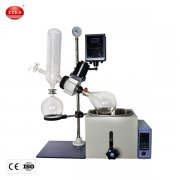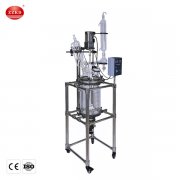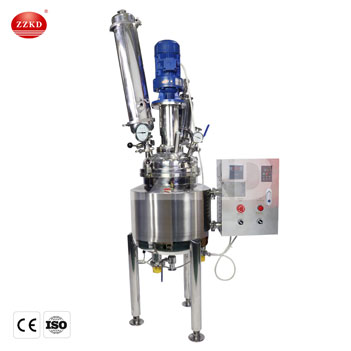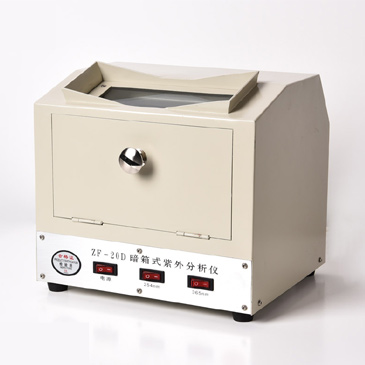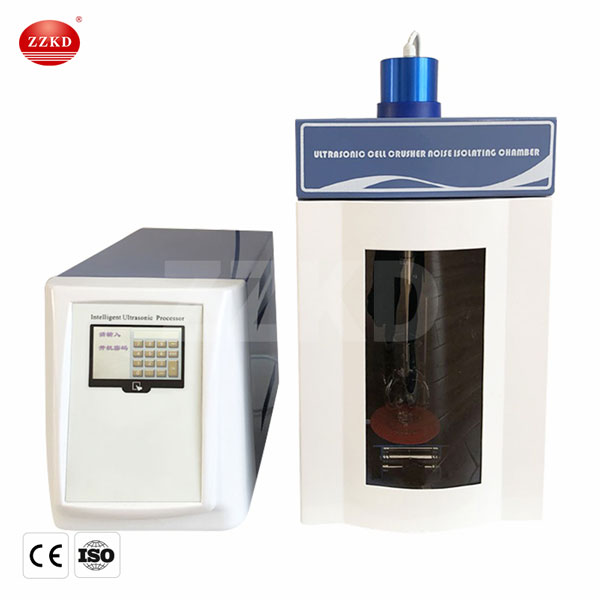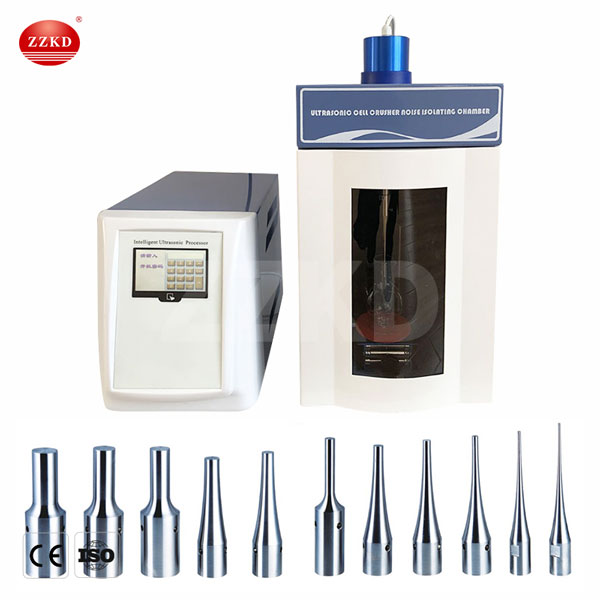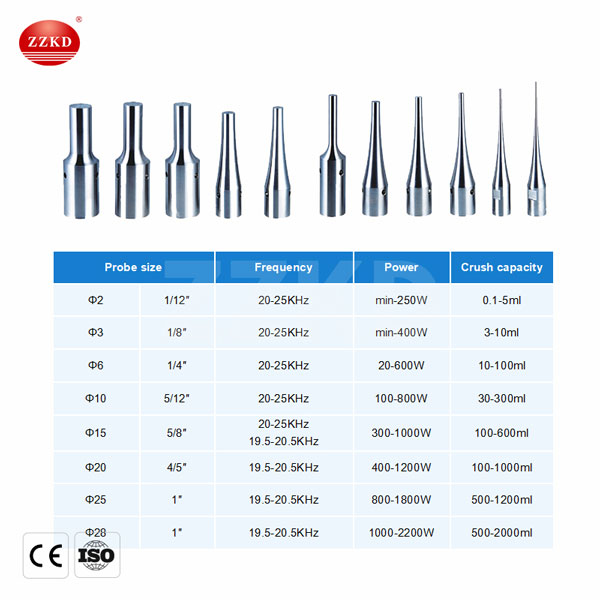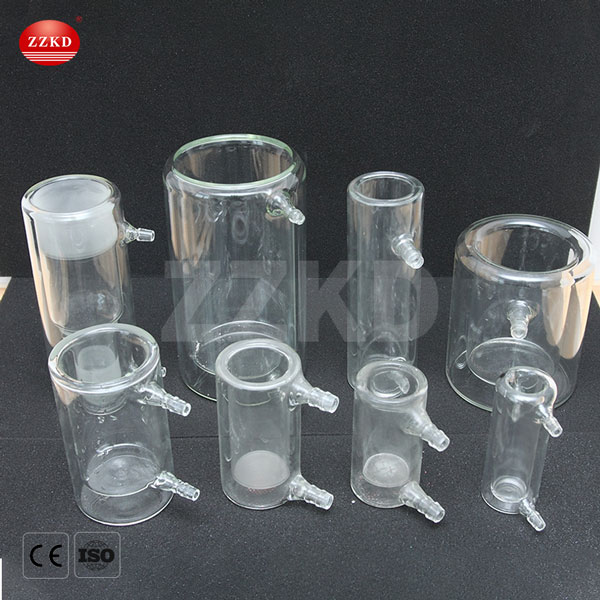Ultrasonic cell crusher is powerful laboratory instruments used for sample preparation in various applications including biology, biochemistry, food science, and nanotechnology. These instruments are designed to provide rapid and efficient homogenization of biological samples, such as cells, tissues, and bacteria, by utilizing high-frequency ultrasound waves. The homogenization process is crucial for breaking down cellular components and releasing the desired biomolecules for further analysis.
Working Principle Of Ultrasonic Lab Homogenizer
Ultrasonic homogenization is a mechanical process that uses ultrasound waves to produce high shear forces that can break apart the cellular structure of biological samples. The process involves the application of high-frequency sound waves to a sample placed in a container filled with a liquid medium, such as water or buffer. The ultrasound waves generate cavitation bubbles in the liquid, which produce a strong shear force that breaks apart the sample. The resulting homogenate contains the desired biomolecules, such as DNA, RNA, proteins, and lipids, that can be used for further analysis.
Ultrasonic lab homogenizers are designed to provide precise and efficient sample processing. They consist of a generator that produces high-frequency electrical signals, a transducer that converts the electrical signals into mechanical vibrations, and a probe or horn that amplifies and focuses the mechanical vibrations into the sample. The probe or horn is typically made of titanium or stainless steel, which are durable and resistant to corrosion. The probe or horn is immersed in the sample and vibrated at high frequency, typically in the range of 20 kHz to 70 kHz, depending on the application.
Dependent Factors for Ultrasonic Lab Homogenizer Efficiency
Ultrasonic homogenization is a technology that uses the mechanical vibration of high-frequency ultrasonic waves to homogenize, disperse, and emulsify substances. Its efficiency is influenced by several factors, including:
1. Ultrasonic power:
The greater the power of the ultrasonic wave, the greater the vibration intensity, which can better homogenize the substance.
2. Processing time:
The longer the treatment time, the longer the ultrasonic wave acts, and the better the treatment effect will be.
3. Processing temperature:
Appropriate treatment temperature helps to improve the efficiency of ultrasonic homogenization, but too high temperature may destroy the material structure.
4. Process container:
The container for ultrasonic homogenization will also affect the processing efficiency. Some material containers will consume energy under vibration and reduce the energy transfer efficiency. It is necessary to choose a suitable container.
5. The nature of the substance being treated:
Different substances have different physical and chemical properties, which will affect the propagation and reflection of ultrasonic waves in the material, thereby affecting the homogenization efficiency.
6. Ultrasonic frequency:
The ultrasonic frequency is related to the particle size of the processed material. Generally speaking, the smaller the particle size of the processed material, the higher the ultrasonic frequency required to achieve a better homogenization effect.
Applications Of Ultrasonic lab homogenizers
Cell disruption
In cell disruption, ultrasonic homogenization is used to break apart the cellular structure of tissues, bacteria, and yeast, and release the intracellular components, such as proteins, nucleic acids, and lipids. The resulting homogenate can be used for further analysis, such as western blotting, PCR, and lipid profiling.
DNA and RNA extraction
DNA and RNA extraction involves the homogenization of cells or tissues to release the nucleic acids, which can then be purified using various techniques, such as phenol-chloroform extraction or spin-column purification.
Protein extraction and purification
Protein extraction and purification involves the homogenization of tissues or cells to release the proteins, which can then be purified using chromatography or electrophoresis.
Nanoparticle synthesis
Nanoparticle synthesis involves the homogenization of a mixture of reactants to produce nanoparticles, such as gold or silver nanoparticles, which have potential applications in drug delivery and imaging.
Emulsification
Emulsification involves the homogenization of two immiscible liquids, such as oil and water, to produce stable emulsions, which can be used in food and cosmetic industries.
The advantages of ultrasonic lab homogenizers
Ultrasonic lab homogenizers are widely used in scientific research and industrial applications for a variety of reasons. Here are some of the advantages of ultrasonic lab homogenizers:
Efficient homogenization:
Ultrasonic lab homogenizers use high-frequency sound waves to break down cell walls and other biological materials, resulting in a more efficient homogenization process than traditional methods.
Faster processing:
Ultrasonic lab homogenizers can process samples more quickly than traditional homogenizers, which can save time and increase productivity.
Reduced sample heating:
Unlike other homogenization methods that generate heat, ultrasonic lab homogenizers use sound waves to break down samples, which generates less heat and reduces the risk of sample denaturation or degradation.
Versatility:
Ultrasonic lab homogenizers can be used to homogenize a wide range of samples, including cells, tissues, bacteria, and viruses, making them a versatile tool for scientific research and industrial applications.
Easy to use:
Ultrasonic lab homogenizers are typically easy to operate and require minimal training, making them accessible to researchers and technicians with varying levels of experience.
Low maintenance:
Ultrasonic lab homogenizers have few moving parts and require minimal maintenance, making them a cost-effective solution for many applications.
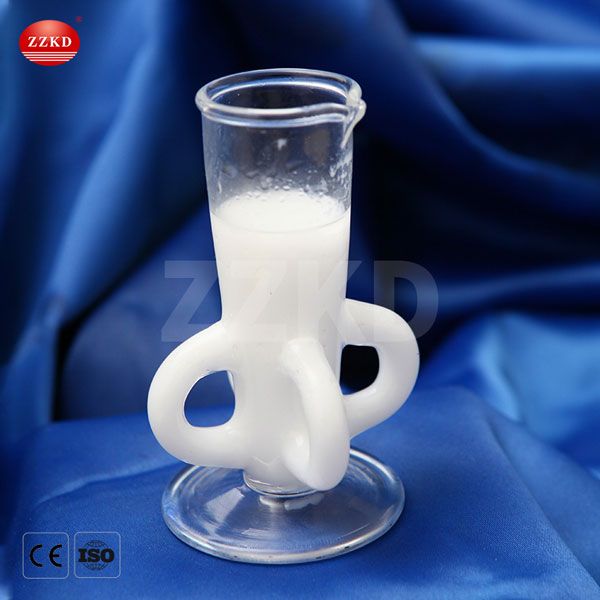
Ultrasonic lab homogenizers are laboratory instruments that use high-frequency sound waves to break down and disperse particles within a liquid sample. The technology behind these instruments involves creating cavitation bubbles within the sample, which generate intense shear forces that can disrupt cell membranes, break down solid particles, and mix liquids together. Ultrasonic homogenizers offer several benefits, including quick and efficient sample homogenization, versatility, and the ability to prepare samples for downstream analysis. However, they also have limitations, including the potential to generate heat and introduce shear forces that can damage or destroy sensitive samples. These instruments are widely used in fields such as biotechnology, materials science, and nanotechnology to prepare samples for analysis, disperse nanoparticles within a liquid, and prepare nanocomposites. Overall, ultrasonic lab homogenizers are powerful tools that have a wide range of applications in research and industry.

 Products
Products





